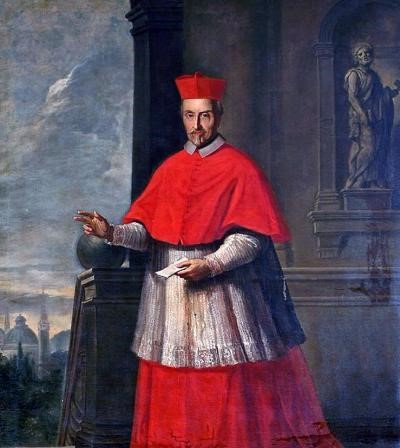
Saint of the Day for 18 June: St. Gregory John Barbarigo
St. Gregory John Barbarigo: Life, Works and Legacy of the Holy Reformer Bishop
Name
St. Gregory John Barbarigo
Title
Bishop
Baptismal name
Gregorio Giovanni Gaspare Barbarigo
Birth
September 16, 1625, Venice
Death
June 18, 1697, Padua
Recurrence
18 June
Martyrology
2004 edition
Beatification
July 6, 1761, Rome, Pope Clement XIII
Canonization
May 26, 1960, Rome, Pope John XXIII
Prayer
O Jesus, Supreme and Eternal Priest, Who wished to continue Your ministry of the redemption and sanctification of souls by means of the Catholic Priesthood instituted by You and Who taught us to pray to The Lord of the harvest to send laborers to His harvest, we beseech You to raise up numerous holy vocations to the priesthood. We pray You for the seminary, destined to receive and nurture Your elect. Send upon this cenacle Your Spirit, Your light and truth, Your help: let it prepare for Your vineyard workers emulous of those Apostles, whom You educated in the school of Your Heart. And we beseech You for the Clergy: always keep Your ministers, the dispensers of the divine mysteries up to the height of their mission, and let their divine mission be generously and faithfully matched by souls! With You and through You we beseech the Eternal Father: Guard them in Your name, guard them from evil consecrate them in truth.
Roman Martyrology
In Padua, St. Gregory Barbarigo, bishop, who established the seminary for clerics, taught catechism to children in their dialect, celebrated a synod, held talks with his clergy and opened many schools, proving himself generous to all, strict with himself.
The Saint and Mission
St. Gregory John Barbarigo is remembered as a reforming bishop who dedicated his life to the spiritual and pastoral renewal of the Church. Born in 1625 in Venice, Barbarigo became bishop of Bergamo and later of Padua, where his mission was distinguished by a tireless commitment to improving the education of the clergy and the pastoral care of the faithful. Barbarigo understood the importance of solid training for clergy and founded seminaries to ensure that priests were well prepared theologically and spiritually. His focus on religious formation reflected a far-sighted vision of the need for well-trained pastors to lead God’s people with wisdom and integrity. In addition to the formation of clergy, Barbarigo was committed to improving the living conditions of his faithful, showing special concern for the poor and needy. His practical charity and ability to listen and respond to the needs of his diocese made him a beloved and respected figure. St. Gregory John Barbarigo represents an example of dedicated and visionary pastoral leadership. His mission of spiritual reform and renewal, rooted in a deep faith and love for the Church, continues to inspire today’s bishops and pastors to work for a Church that is holier and more attentive to the spiritual and material needs of God’s people.
The Saint and Mercy
St. Gregory John Barbarigo embodied mercy through his tireless service to the Church and the people of God. As bishop, he dedicated himself to improving the lives of his faithful, showing deep compassion for the poor and needy. His focus was not only spiritual but also practical: he founded seminaries for the formation of clergy, ensuring that priests were well prepared to serve with wisdom and love. Barbarigo firmly believed in the need for a trained and dedicated clergy, capable of leading with humility and mercy. His work of reform was aimed at building a more just and compassionate Church, where every member could find support and guidance. His charity knew no bounds, and his life was a continuous act of mercy toward anyone in need of help, comfort and hope. His ability to listen and respond to the needs of his people made him a beloved and respected pastor. St. Gregory John Barbarigo reminds us that mercy is at the heart of Christian ministry, a daily commitment to live God’s love through concrete acts of kindness and compassion. His life is a shining example of how mercy can transform communities and bring people closer to faith.
Hagiography
The Milanese used to repeat to the Bergamasks, complimenting their bishop, “We have a dead cardinal saint, St. Charles Borromeo, you have a living bishop.” A living bishop was Gregory Barbarigo, who, by the way, had boundless esteem for Saint Charles. He had chosen him as a model of spiritual life and…
